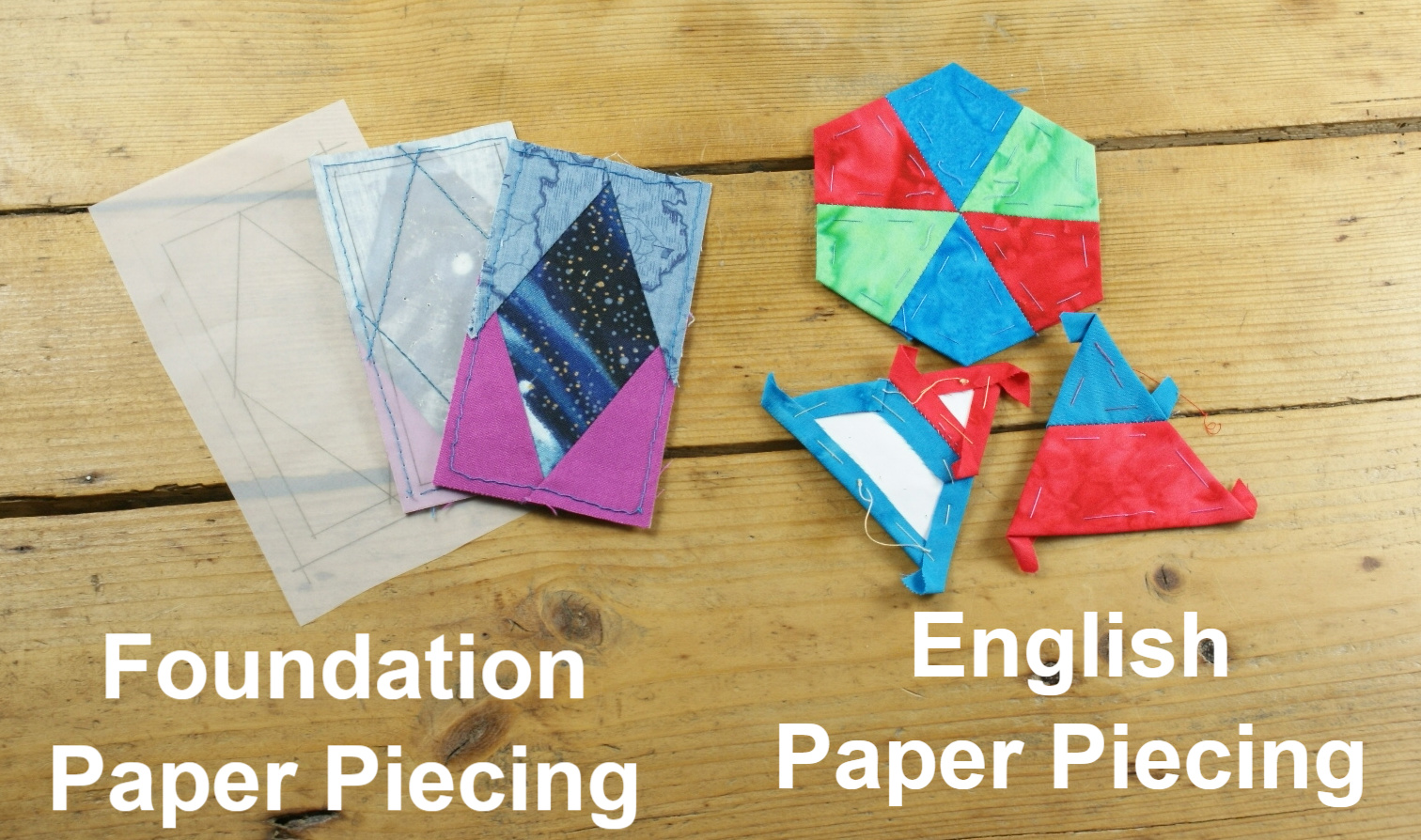What is the difference between ‘English Paper Piecing’ and ‘Foundation Paper Piecing’?

Briefly:
English Paper Piecing is a pure hand-sewing method used in traditional patchwork and quilting. The method involves the stabilisation of a fabric patch by fixating it to a heavy paper template (the ‘paper piece’). These stabilised fabric patches are then sewn together by hand into larger patterns, or quilt blocks, usually using an over-sew method. The paper pieces are removed when the shapes are sewn in on all sides and they can be reused for another project.
Foundation Paper Piecing on the other hand is generally done by sewing machine. The pattern, usually a whole block, is drafted directly on a sheet of foundation paper (or piece of muslin fabric). The block is then completed by sewing the fabric patches directly to the foundation paper using the stitch-and-flip method. On completion of the block the paper is removed by carefully tearing it away.
Both techniques have their merits, as both enable the creation of stunning quits, sewing very complicated patterns with high accuracy.
The main advantage of English Paper Piecing is the fact that it is a very low-tech technique where few tools are needed, making EPP projects very ‘portable’. In addition, hand-sewing itself is seen by many as having a positive benefit on their overall wellbeing. The technique itself is easy to learn and only little tuition is needed to achieve great results.
Foundation Paper Piecing on the other hand is quite complicated and can be very challenging, particularly for a beginner in sewing. This method is best learned in a workshop under expert tuition.
Further reading:
